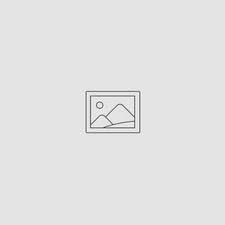Selecting the Front Glass Sizes - Outex Front Lens
Apr 23, 2023
Selecting the right optical glass underwater port for your camera lens
Outex makes various port sizes. They are engineered that way to match industry-standard filter thread diameter sizes, ensuring the port aligns perfectly with your lens for optimal imaging performance. It does that in multiple ways:
- This design optimizes the optical positioning of the Outex port in relation to the lens, so there's no vignetting, reflections, refraction, or other interference common with many underwater housings where the port is independent of the lens and designed to match it.
- It becomes one with the lens in use, just like a filter, or polarizer would. It moves with the lens, so it remains in that best optical position at all focal lengths.
Like your camera & lens system, the Outex housing system is modular and made up of interchangeable, compatible parts. All/any of our ports, including the domes, are interchangeable and fit all/any of our covers and vice versa. And we support all industry standard sizes, from 49mm to 105mm in filter thread diameter sizes. We cover domes for lenses withOUT filter thread sizes, and step-up rings below.
Note that the front port filter thread size is different from your focal length or zoom range (see images below). The Outex front glass port will thread onto your lens just like a UV filter or polarizer. You can purchase as many front ports as you wish. Our kits/bundles include any 1 size you select, and you can add additional sizes from our Parts page.
The filter thread size usually matches your lens cap size in millimeters, and it's usually printed/written somewhere on your lens (front or side), or on the lens cap - depending on the brand/make/model lens with the symbol "⏀", such as ⏀77.

In the example above the focal length = 24-105mm, and the filter thread size = 77mm


Compatible with all Outex Cover sizes
All of our font glass ports are compatible/work with all/any of our cover sizes. So you can purchase multiple covers, or multiple ports and use them interchangeably. The flat ports are also independent/interchangeable from the domes.
Outex front ports are made of glass - not acrylic or plastic.
All Outex front glass ports use professional-grade optical glass - not acrylic/plastic like most other housings/cases. Outex front ports are made from high-quality optical glass because:
-
Superior image sharpness and clarity. The same reason your lens uses glass instead of acrylic.
-
True color accuracy without distortion.
-
Professional durability and reliability in demanding environments. Less prone to scratching.
Photographers and filmmakers around the world trust Outex because the glass ports maintain the same optical standards used in professional lenses and filters.
Step Up Rings
Step up rings can be used inside Outex front glass ports with lenses that have filter threads smaller than the port size. For example, you can use a 77-82mm step up ring with an Outex 82mm port for a 77mm filter-thread-size lens. In other words, you would not want to use step down ring, such as an 82-77mm step down ring with an Outex 77mm port for an 82mm filter-thread-size lens, unless you are OK with significant vignetting on the lens' field of view.
Thus, while it is cheaper than using the right size front glass port, step-up rings may introduce vignetting because they introduce physical distance in the lens' field of view, specially for wide angle lenses. It's your choice.
Follow the Installation page critical steps not to over-thread step up rings, filters, or polarizers onto the Outex front ports, just like you don't want to over-tighten the port onto the lens.
Lenses withOUT filter threads: Dome Ports
If your lens does not accommodate filters or polarizes and does not have a filter thread as is common with fisheye, curved, and hooded lenses, you will need to use the Outex Dome ports. Both/either domes work on any/all lenses, whether they have filter threads or not, thru adaptors or clamps that optimal position and secure the dome to your un-threaded lens. There are several pages about domes in our Questions page.
Dome adaptors = Lenses with filter threads (we support all sizes)
Dome clamps = Lenses witOUT filter threads (we support all sizes)

Optical Imaging Quality
Outex housings feature high-quality optical glass that ensures distortion-free images and accurate colors. Optical glass is better than acrylic/plastic. That's why your lenses are made of glass - not acrylic. Many competitors use acrylic or polycarbonate lenses, which can compromise image sharpness and scratch much more easily. Outex optical glass ports are the best imaging solution in the market.
In addition, or ports (flat and domes), which are all made of optical glass, conform to each lens, which positions them optimally for optical results. The Dome itself is universally compatible, and its clamps and adaptors conform to the specifications optics of each lens, positioning them optimally and delivering ideal results. By contrast, most lenses, "float" inside hard case housings, so you may end up with vignetting, or other impediments to use. With Outex you know the positioning and fit will match to optimize the imaging characteristics of the specific lens being used, delivering the best results each time.
In other words, we've also designed both of our domes to be modular. The domes themselves are universal and fit all lenses. And the adaptors or clamps work with the domes to position the lens correctly inside the dome for the best optical results, and so the lens and dome move in unison for the best usability and imaging results.

The above photo show 2 Pro Kit systems, showing the Flat vs. Dome ports in use.
Like the flat ports, the Domes are interchangeable with any/all of the covers and accessories, and can be used independently. There are several entries on the differences between flat vs. dome ports in our Questions pages.



